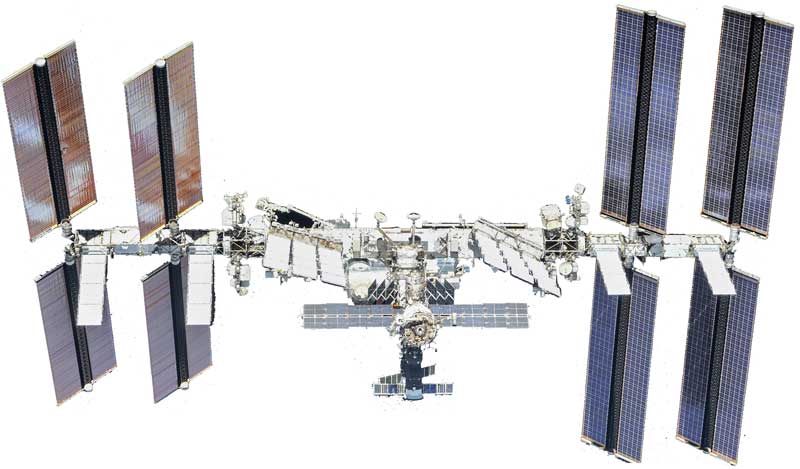 International Space Station, also called ISS for short, is a satellite designed and launched by NASA together with other space agencies. It provides scientists and astronomers a laboratory in Earth’s orbit for experiments that require space environment. The astronauts travel between Earth and International Space Station on Spacecraft.
International Space Station, also called ISS for short, is a satellite designed and launched by NASA together with other space agencies. It provides scientists and astronomers a laboratory in Earth’s orbit for experiments that require space environment. The astronauts travel between Earth and International Space Station on Spacecraft.
Design and Construction
One of the most interesting aspects in the design of the International Space Station (ISS) was making it modular. Modules are the detachable parts that can easily be replaced or upgraded without disturbing other parts. The modular design has provided greater flexibility in the construction of ISS and allowed an easier upgrade process.
There are two main types of modules in the ISS; pressurized modules and unpressurized modules. The pressurized modules have the air pressure maintained equal to sea level (14.7 psi). The crew does not need pressurized suits to enter the pressurized modules. The unpressurized modules, on the other hand, have no air inside them and astronauts need pressurized suits to enter in these modules. The activities that require a vacuum environment of space are performed here.
The ISS has been designed to harness the power from the Sun with the help of solar panels. All the solar panels in ISS produce around 120 Kilo-watts (120,000 watts) of electric power to operate all the necessary devices and equipment.
Why International Space Station Was Made?
There were various purposes and needs for the development of ISS. The main purposes for the formation of ISS were laboratory in space, exploration, and a station for space crafts.
Scientists always wanted some kind of laboratory in space so they can conduct experiments in the space environment. The experiments, such as how fluids behave in a gravity-free space environment, performed on ISS gave many outstanding results compared to the experiments performed on the Earth. Moreover, ISS was also needed as a station for space crafts for future missions for space exploration towards Moon, Mars, and other distant objects.
Life of Astronauts on the International Space Station
 The crew on the ISS start their day from 6:00 AM and do some exercise before taking breakfast. After taking breakfast and making the day’s plan, the crew’s official workday starts at 8:10 AM. The crew follows their daily plan and continues to Work for 10 hours. In between their work hours, they also take a 1-hour break for lunch. Also, they do various exercises throughout the day and after lunch. The crew scheduled sleep time of the crew is 9:30 PM, before which the crew members perform certain activities prior to sleep.
The crew on the ISS start their day from 6:00 AM and do some exercise before taking breakfast. After taking breakfast and making the day’s plan, the crew’s official workday starts at 8:10 AM. The crew follows their daily plan and continues to Work for 10 hours. In between their work hours, they also take a 1-hour break for lunch. Also, they do various exercises throughout the day and after lunch. The crew scheduled sleep time of the crew is 9:30 PM, before which the crew members perform certain activities prior to sleep.
Health and Safety Issues
The crew that arrives the ISS mostly spent 6 months and after that period they have to return back to the Earth. There are several issues in living on ISS, some of which are stress, exposure to radiation, and weightlessness issue. The stress is mostly caused by living for a long time in an enclosed container and being away from family and friends for many months.
Interesting Facts
- After November 2000, ISS was never left alone; there was always a crew that looked after the ISS.
- By the end of 2017, there have been 393 successful spaceflights to the International Space Station and a total of 227 humans have visited been.
- ISS completes its orbit around the Earth in 90 minutes which results in 16 sunrises and sunsets for the ISS.





